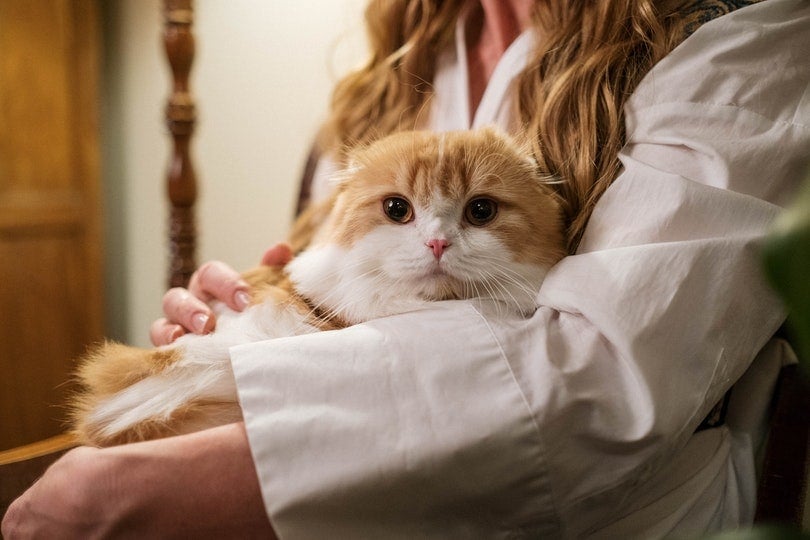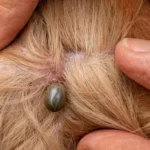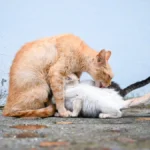The bond between cats and their owners is a unique and special relationship that has fascinated pet lovers for centuries. While cats have a reputation for being independent creatures, many cat owners have experienced moments of love and affection from their feline companions. In this article, we will explore the concept of cat love for humans and delve into the various ways cats express their affection.

Understanding Cat Behavior
To understand cat love, it’s important to recognize the independent nature of cats. Unlike dogs, cats are more self-reliant and have retained their wild instincts to a greater extent. However, this doesn’t mean that cats are incapable of forming deep emotional connections with their human owners. Cats have their own unique ways of showing affection, and understanding their behavior is key to recognizing their love.
Cats’ unique ways of showing affection can be subtle and nuanced. They may rub against their owners, purr softly, or gently knead their paws against a blanket or their owner’s lap. These behaviors are often signs of contentment and love. Additionally, grooming rituals, where cats groom themselves or their owners, are another way cats show their affection.
Signs of Love in Cats
- Purring and kneading behavior: When a cat purrs while being petted or kneads their paws against a surface, it’s a sign of comfort and contentment. Purring is not only a vocalization but also a way for cats to bond with their owners.
- Grooming rituals: Cats are meticulous groomers, and when they groom themselves or other cats, it’s a sign of trust and affection. If your cat grooms you by licking your hair or gently nibbling your fingers, it’s their way of showing love.
- Seeking physical proximity and cuddling: Cats often seek physical closeness with their owners. They may curl up on their owner’s lap, sleep next to them, or follow them around the house. This desire for physical proximity is a clear indication of their affection.
- Bringing gifts or “presents”: Some cats show their love by bringing small gifts to their owners, such as a toy mouse or a leaf they found outside. While it may seem strange to us, this behavior is a cat’s way of sharing their hunting success and showing their bond.
Understanding these signs of love in cats allows us to appreciate the unique ways in which they express their affection. However, it’s important to remember that each cat is an individual, and not all cats will display these behaviors in the same way. Some cats may be more reserved in their expressions of love, while others may be more overt and affectionate.
Scientific Research on Cat-Human Bond
Scientific research has shed light on the fascinating bond between cats and their human owners. Studies have shown that cats can experience a release of oxytocin, often referred to as the “love hormone,” when they interact with their owners. Oxytocin is associated with feelings of trust, attachment, and bonding. This suggests that cats are capable of forming emotional connections with their human companions.
In comparison to the bond between humans and dogs, the cat-human bond has its unique qualities. While dogs are known for their loyalty and dependence on humans, cats exhibit a more independent nature. However, this doesn’t mean that cats are incapable of forming strong bonds. Cats may form more subtle and selective attachments, but the emotional connection they share with their owners can be just as profound. More about this research here
Examining the role of attachment and socialization helps us understand the dynamics of the cat-human bond. Cats that are socialized from a young age, exposed to positive experiences with humans and other animals, are more likely to form strong bonds with their owners. Attachment theory suggests that the early experiences of cats can shape their ability to form secure relationships. Building a strong foundation of trust and positive interactions during a cat’s formative stages is crucial for fostering a deep bond.
Individual Differences in Cat Behavior
Just like humans, cats have unique personalities that influence their behavior and the way they bond with their owners. Some cats are naturally more outgoing, affectionate, and social, while others may be more reserved or independent. Understanding these personality traits can help us tailor our interactions and expectations to meet each cat’s individual needs.
Cats with a history of abuse or neglect may require additional patience and understanding. These cats may have trust issues and may take longer to build a bond with their new owners. Providing a safe and nurturing environment, along with consistent positive interactions, can help these cats overcome their past trauma and develop a trusting relationship.
Various factors can influence the strength of the human-cat bond. The cat’s age, previous experiences, and the quality of care and interaction they receive all play a role. Cats that receive regular love, attention, and positive reinforcement are more likely to form deep bonds with their owners. It’s important to establish a routine of feeding, grooming, and playtime to create a sense of security and predictability for the cat.
The Role of Care and Interaction
Positive reinforcement and rewards are powerful tools in strengthening the bond between cats and their owners. Rewarding desirable behaviors, such as using the litter box or engaging in appropriate play, helps create a positive association and reinforces the bond. Offering treats, praise, and affection when the cat displays affectionate behavior can encourage and deepen their attachment to their human companion.
Creating a stimulating and enriching environment is crucial for a cat’s overall well-being and the strength of the bond. Providing scratching posts, climbing trees, and interactive toys not only fulfill a cat’s natural instincts but also promote engagement and interaction. A happy and stimulated cat is more likely to form a strong bond with their owner.
Playtime is not only essential for a cat’s physical health but also a great opportunity for bonding. Interactive toys, such as feather wands or puzzle toys, can engage the cat’s hunting instincts and create shared playful moments. Regular play sessions help build trust, strengthen the bond, and provide an avenue for positive interaction.
By understanding the scientific research on the cat-human bond, recognizing individual differences in cat behavior, and prioritizing care and positive interaction, we can cultivate a deep and meaningful relationship with our feline friends. Nurturing this bond brings joy, companionship, and a mutual sense of love and affection between cats and their human companions.
Debunking Myths and Misconceptions
There are several myths and misconceptions surrounding cats and their capacity for love and affection. Addressing these misconceptions is important to provide a more accurate understanding of cats’ emotional lives and their relationships with their owners.
One common perception is that cats are aloof or unaffectionate. However, this is far from the truth. Cats may display their affection in more subtle ways compared to dogs, but they are capable of forming deep emotional connections with their owners. Understanding and interpreting their unique ways of expressing love is key to recognizing their affectionate behaviors.
Separating fact from fiction is essential when it comes to understanding cat love. While it is true that cats have independent natures, they still have the capacity for love and attachment. Cats may not always seek constant attention like dogs, but they often demonstrate their love through various behaviors, such as purring, kneading, and seeking physical proximity. By debunking misconceptions, we can appreciate and acknowledge the genuine love that cats have for their human companions.
Conclusion
The complexity of cat emotions and affection is a fascinating topic. Cats possess a range of emotions and have the ability to form deep bonds with their owners. While each cat-owner relationship is unique and individual, there are common threads that highlight the depth of their connection.
Understanding and appreciating cats’ love for their owners encourages a harmonious relationship. Cats may have their own distinct ways of showing affection, and it’s essential to respect and recognize these behaviors. By observing and interpreting their body language, purring, grooming rituals, and other signs of love, we can deepen our understanding of the bond we share with our feline friends.
In conclusion, cats are capable of experiencing and expressing love in their own unique ways to their owners. Debunking myths and misconceptions surrounding cat love helps us recognize their affectionate behaviors and appreciate the depth of their emotions. Each cat-owner relationship is special and should be nurtured with understanding, respect, and appreciation. Embracing the love that cats offer enriches our lives and strengthens the bond we share with these amazing creatures.
Read more on some of the personal experiences of pet owners across the world on this thread of Quora.
Frequently asked questions about do cats really love their owners
Do all cats show love towards their owners?
Yes, most cats do show love towards their owners. However, the way they express it may vary. Some cats may be more affectionate and seek physical contact, while others may show love through subtle gestures like sitting nearby or grooming their owners.Can cats form strong emotional bonds with their owners?
Absolutely! Cats have the ability to form deep emotional bonds with their owners. They can develop a sense of attachment and trust, often seeking comfort and security from their human companions.How can I tell if my cat loves me?
Cats show their love in various ways. Look out for signs like purring, kneading, head-butting, slow blinking, and bringing you “presents.” They may also seek physical closeness, cuddle with you, or groom you as a sign of affection. Read more on some of the personal experiences of pet owners across the world on this thread of Quora.Are there any scientific studies supporting the bond between cats and humans?
Yes, scientific research has shown that cats release oxytocin, often referred to as the “love hormone,” when they interact with their owners. This hormone plays a role in bonding and strengthening the emotional connection between cats and humans.Can a history of abuse or neglect affect a cat’s ability to love?
Cats that have experienced abuse or neglect may have trust issues or exhibit fear towards humans. However, with patience, understanding, and a loving environment, many of these cats can overcome their past and develop loving relationships with their new owners.How can I strengthen the bond with my cat?
To strengthen the bond with your cat, provide positive reinforcement through rewards, treats, and praise. Create a stimulating and enriching environment with toys, scratching posts, and cozy spots for them to relax. Spend quality time playing, interacting, and grooming your cat to deepen the emotional connection.









